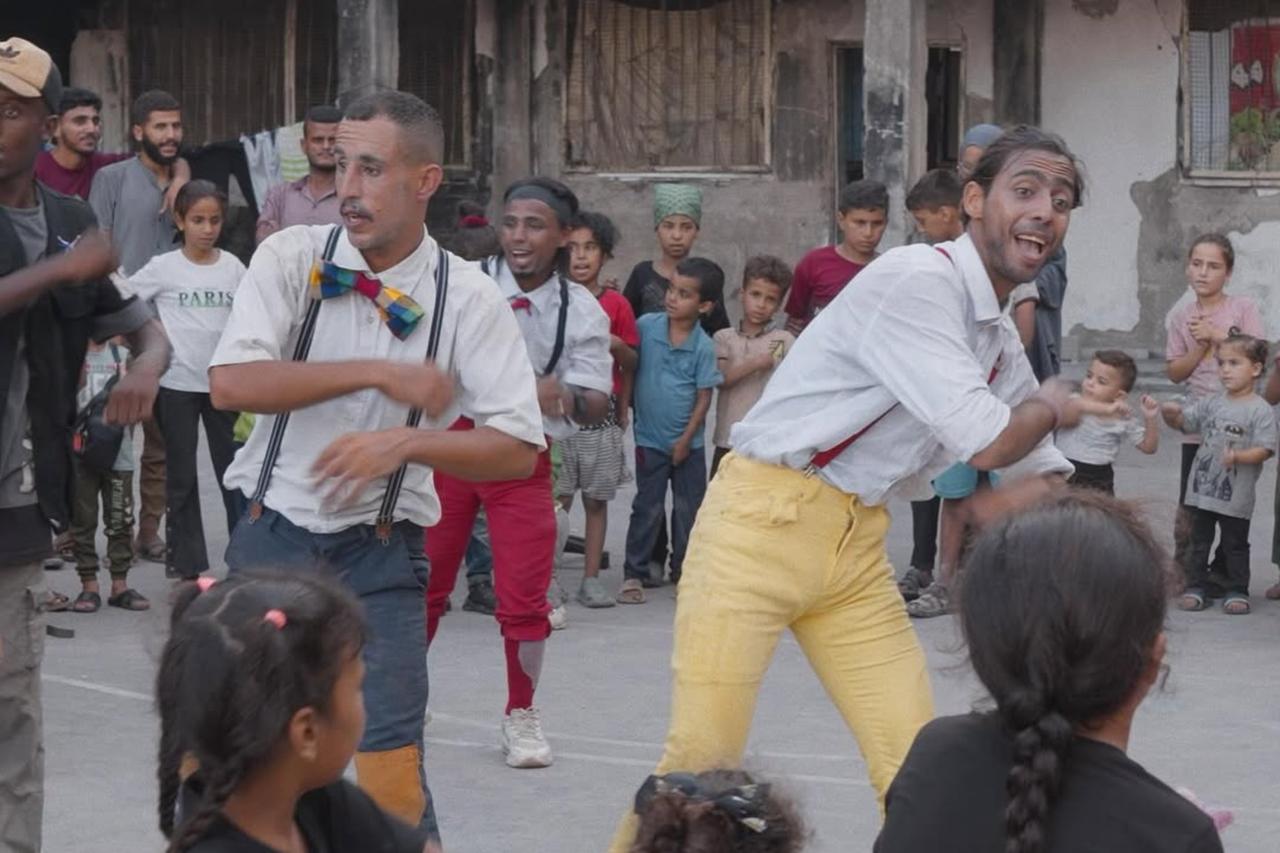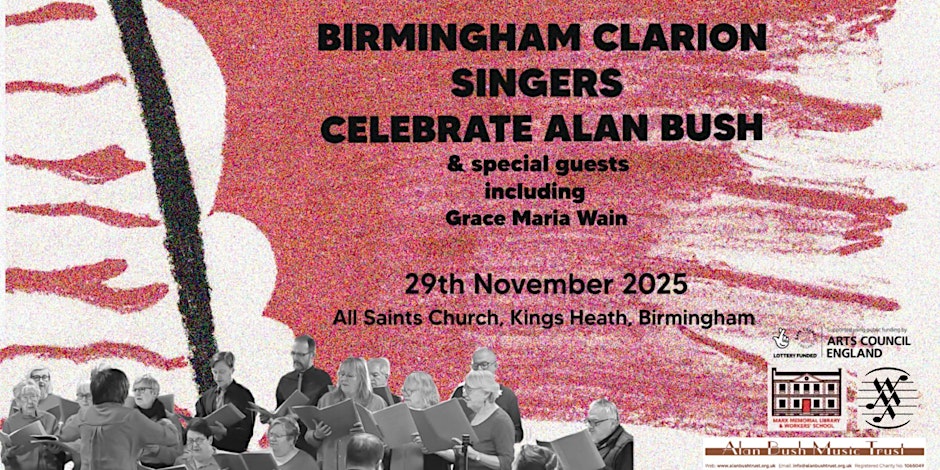
By Jenny Farrell
In 1962, Dmitri Shostakovich composed his 13th Symphony, basing it on five poems by Yevgeny Yevtushenko that provide its textual and thematic basis. In the texts selected by Shostakovich, Yevtushenko reflects on Soviet society during the 1950s and 60s. The themes range from the suffering inflicted by Nazi Germany and the resilience found in humour, to the trauma of Stalinism and the quiet strength of enduring women. The symphony also addresses integrity in labour, opposing bureaucracy and opportunism. Deeply moved by these poems, Shostakovich sought and received Yevtushenko’s permission to set them to music. The resulting work — often referred to simply as Babi Yar, after its first movement — transcends specific events, encompassing the historical and contemporary of the USSR, and attains a philosophical depth by invoking themes of enduring human relevance.
Babi Yar, a ravine near Kiev, was the site of one of the most horrific massacres of the fascist genocide. On September 29 and 30, 1941, the SS Einsatzgruppe C murdered nearly 34,000 Jewish civilians. In total, approximately 100,000 people — including Roma, Soviet prisoners of war, and Ukrainian nationalists — were killed there. This atrocity, alongside the deaths by starvation of a million Leningraders, stands as a stark symbol of the brutality of the fascist occupation. Shostakovich had previously dedicated his 7th Symphony to the Siege of Leningrad; in the 13th, the Babi Yar massacre forms the subject of its opening movement.
The symphony begins with the haunting entry of the choir: “There is no memorial above Babi Yar. / The steep ravine is like a coarse tombstone.” The lyrical-musical “I” identifies with the historical trauma: “I am.” Through this identification, it embodies the suffering of the Jewish people—tracing a path from biblical events such as the Exodus, through the crucifixion, to historical tragedies including the Dreyfus Affair, the Białystok pogrom, and the fate of Anne Frank. This merging of the”“I” with the persecuted invites the audience into a shared space of memory and mourning. Babi Yar thus becomes a symbolic locus of collective history. The interplay between choir and soloist underscores the connection between the individual voice of the artist and the collective voice of the Russian people.
Hatred of Jews serves as a measure of historical barbarism and symbolises all forms of ethnic hatred, as well as the consequences of domination and violence inflicted upon peoples. Overcoming notions of human superiority and inferiority is presented as a fundamental criterion for the maturity and humanity of any society — including a socialist one. The eradication of such thinking is a prerequisite for building a truly human society grounded in communist principles. All the more striking, then, is the distress of the lyrical-musical “I” in the face of persistent antisemitic prejudice: How filthy that without the slightest shame / the anti-Semites proclaimed themselves: / (with choir:) The Union of the Russian People.
Both music and text make clear that this reality stands in stark contrast to the ideals of the society it addresses: I feel that I am Anne Frank. The composition invokes the Internationale as the benchmark of true humanity. Composer and poet affirm their belief in the ideals of socialist society, using this perspective as the standard by which the maturity of Soviet society is measured throughout the symphony: Let the Internationale thunder out / when the last anti-Semite on the earth / has finally been buried.
Musically, the first movement is dominated by a dark B minor tonality and dissonant harmonic textures. Deep strings, brass, muted percussion, and the low registers of the soloist and choir create a suffocating atmosphere, palpably conveying the suffering and despair of the victims. The music becomes a long, soundless scream / above the thousands and thousands buried here, and from this silent lament emerges an accusation. Frequent dissonances sustain an unstable musical environment, intensifying the sense of mourning and the lingering echoes of silent cries. The harsh tonal colour allows no space for “redemption” through harmonic resolution.
The male choir lends the work a ghostly, collective voice — the voice of the people. The depth of the registers underscores the collective pain and serves as a musical embodiment of the countless oppressed and forgotten victims. In this way, the choir becomes history itself: bearing the weight of memory, it continues the narrative of persecution and suffering as a collective lament. At times, the music is onomatopoeic — evoking, for instance, the splashing of blood in Białystok or the banging of the door in Anne Frank’s story. The movement ends with the declaration that only through identification with the victims of tyranny can one become fully human: I feel the loathsome hatred / of all anti-Semites as though I were a Jew – / and that is why I am a true Russian! It should be emphasised that the theme of this movement is both international and historical in scope, while also addressing the question of Soviet society’s maturity at the time of the symphony’s composition.
Humour as an ironic counterpoint
The second movement also engages with these broader themes but introduces humour as an ironic counterpoint to the first. Musically, this “humour” is marked by surprising rhythms and abrupt dynamic shifts that lend the piece a vibrant tension. Here, humour emerges as an expression of resistance — a manifestation of the will to survive. Its sudden rhythmic leaps and dissonant bursts render humour an untamed, almost chaotic force. Composer and poet humorously and ironically celebrate the plebeian subject on a world-historical stage. The trickster figure at the centre of this movement is shaped by various cultural influences.
Among them, Nasreddin Hodja is named explicitly — a beloved figure in folk traditions across the Middle East, Central Asia, and the Balkans. Humour, the movement insists, cannot be bought or eradicated. It reappears again and again. Poor, often imprisoned, but indestructible. Time and again, even amid dramatic scenes, the trickster’s laughter rings out — mocking authority, defying control. He is even armed when the Winter Palace is stormed. For those familiar with Robert Burns, it is a subtle delight that Shostakovich musically alludes to the trickster still fiddling beneath the gallows in McPherson’s Farewell, quoting his own earlier setting of the Scottish folk song. At its heart, humour embodies the voice of the people — the rebellious, revolutionary “I.”
In both text and music, the third movement, In the Store, stands in deliberate contrast to the second. Now, the focus shifts explicitly to contemporary Soviet society. The music adopts a solemn tone: women walk slowly, burdened with bags and jugs. Shostakovich uses tone painting to depict their movements — the clattering of jars, the shuffle of weary steps. The soloist recounts: Some with shawls, some with scarves, / as though to some heroic enterprise or to work, / into the store one by one / the women silently come.
The choir echoes: They have endured everything, / they will continue to endure everything! Musically, the movement is marked by an extraordinary simplicity, carried in the mournful, unadorned melody of the solo bass.
As in the first movement, the lyrical “I” identifies with those portrayed, placing itself among them: I’m shivering as I queue up for the cash desk, / but as I inch forward towards it, / from the breath of so many women / a warmth spreads round the store.
A generally softer dynamic range and restrained articulation in both choir and orchestra underscore the movement’s grounded, everyday quality. This simplicity conveys not only the exhaustion of postwar life but also its quiet resilience. The collective breath of the women brings warmth — to the shop, to their homes. They have earned their money through hard labour; they have endured much, and continue to endure in silence. The hardship of the postwar years is not over. And the text suggests that these women are not always treated justly: It is shameful to short-change them! / It is sinful to short-weight them!
Even in this everyday realm, Soviet society has yet to fully meet its ideals. The women, in their perseverance and dignity, stand as a further test of the society’s maturity.
The dark legacy of Stalinism
The fourth movement, Fears, turns to a specific and haunting dimension of Soviet reality: the legacy of Stalinism. The atmosphere shifts dramatically. Structured as a dark largo, the movement becomes a deeply expressive musical reflection on the pervasive fears that shaped Soviet society under Stalin. It opens with a solo tuba playing an atonal-sounding theme — unsettling and heavy. The low, resonant tone of the instrument immediately sets a mood of unease and threat, establishing the emotional landscape of the entire movement.
The choir enters in unison, almost declamatory, with a forceful, recitative-like delivery. The text is devastating, and the choral musical setting gives voice to a collective sense of oppression. Dissonance dominates. The soloist emerges to engage in a tense dialogue with the bass clarinet — an emotionally charged interaction that evokes the lasting trauma of a terrifying era. The music renders this fear palpable, drawing it close to the listener. And even as the choir declares: Fears are dying out in Russia, both text and music powerfully summon the memory of past horrors — suggesting they are anything but forgotten.
As a stark contrast, and almost as commentary on this oppressive soundscape, a simple choral melody emerges — recalling revolutionary battle songs. At first, this passage offers an apparent lift, but it is immediately shaded with irony: We weren’t afraid of construction work in blizzards, / or of going into battle under shell-fire, / but at times we were mortally afraid / of talking to ourselves.
The passage evokes a painful contradiction: outward courage amid inward distrust. A new fear has arisen, both among Russia’s enemies — the Cold War is ongoing, great powers further develop nuclear weapons — and fear of one’s own dishonesty and failure in the face of societal challenges. Musically, the movement maintains a sombre, introspective tone throughout. It leaves a lingering emotional weight, a quiet yet persistent impression of unease. The tension between hope and disillusionment, between idealism and fear, resonates long after the final note.
A plea for truthfulness and authenticity
The fifth and final movement of the symphony is based on the poem A Career, written by Yevgeny Yevtushenko especially for Shostakovich. Once again, the music stands in contrast to the preceding movement. It begins with a gentle, contemplative melody that sets a solemn, almost meditative tone. Deep strings and muted brass help to create this subdued atmosphere. Thematically, however, the movement links back to concerns expressed earlier in Fears — particularly the plea for truthfulness, integrity, and authenticity in both personal and professional life.
Yet, the scope broadens once more, extending into international and historical dimensions. Soloist and choir together reflect on Galileo’s moral courage in the face of authority, comparing him with an unnamed scientist — a stand-in for all those who lacked such courage. The line Now that is what I understand by a careerist is delivered with ironic humour, inverting the typically negative connotation of the word. The movement expands this irony to honour scientists and artists who, rather than conforming, risked everything for the sake of truth and humanity: They’re forgotten, those who hurled curses, / but we remember the ones who were cursed. The true heroes, the text asserts, are those who have advanced the common good — from scientists who died of disease to pioneers of space exploration: All those who strove towards the stratosphere, / the doctors who died of cholera, / they were following careers!
And in a final, striking declaration: I’ll take their careers as an example! / I believe in their sacred belief,/ and their belief gives me courage. / I’ll follow my career in such a way / that I’m not following it!
In this closing movement, Shostakovich celebrates not opportunists, but those whose contributions to humanity were made with quiet integrity. It is a tribute to moral clarity and a reflection on the responsibility of the artist. As in the earlier movements, it ultimately invites reflection on the ideals and contradictions of contemporary Soviet society.
The premiere of the symphony, on 18 December 1962, took place under considerable political pressure. Just days earlier, a dispute occurred between Nikita Khrushchev and Yevtushenko regarding the issue of antisemitism. Attempts were made to persuade Shostakovich and conductor Kirill Kondrashin to cancel the performance. Nevertheless, the premiere at the Moscow Conservatory proceeded, marked by a solemn and deeply moving atmosphere. The audience was visibly affected.
The symphony as a whole serves as a stocktaking of Soviet society in the early 1960s. Its core value system is the vision of a truly socialist society. Crucially, neither Yevtushenko nor Shostakovich reject this ideal. Instead, through the engagement with difficult and painful subjects, they seek to provoke thought, self-examination, and a renewal of commitment to those ideals.
The greatest controversy surrounded the first movement, Babi Yar. Two key criticisms were raised: first, that the focus on the massacre of Jews excluded other victims of Nazi war crimes; and second, that the idea of Jewish suffering standing symbolically for all victims — as emphasised in the symphony’s reference to The Internationale — was not widely accepted. Moreover, public discussion of persistent anti-Jewish prejudice was deemed unacceptable.
It is likely that other elements also provoked concern, particularly in the third, fourth, and fifth movements, where critical perspectives on the construction of socialism are articulated. These include the portrayal of women as figures of quiet resilience, enduring long queues and economic hardship; the reflection on Stalinist terror and the lingering fear among war heroes of being denounced; and the sharp contrast drawn between career opportunists and true servants of humanity.
Through all of this, Shostakovich and Yevtushenko offer not condemnation but critical engagement — an attempt to illuminate both failures and ideals. Their shared effort results in a deeply humanistic vision, and in this sense, the 13th Symphony can rightly be called a masterpiece of socialist realism.
See also Jenny Farrell’s article on Shostakovich’s Leningrad symphony















